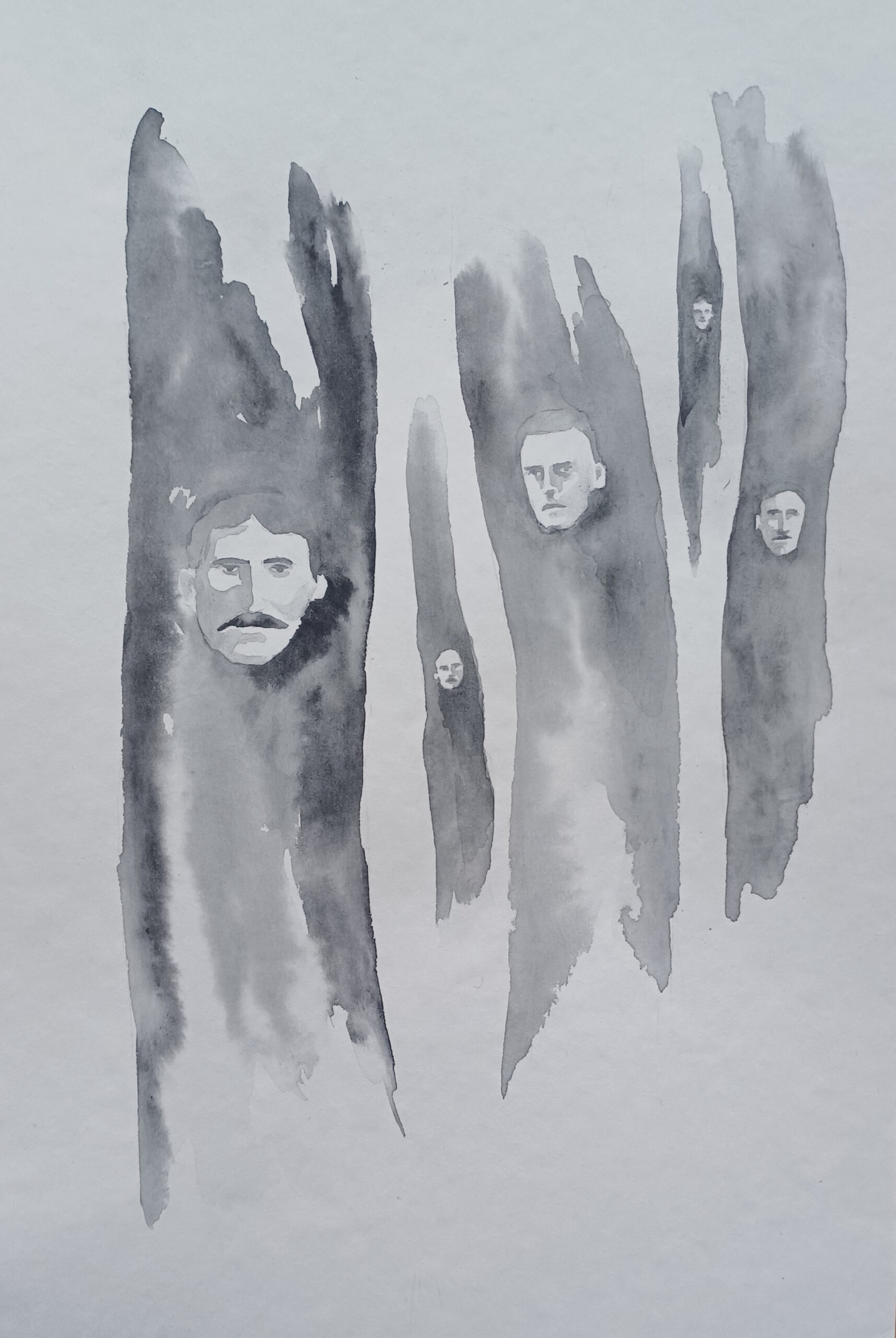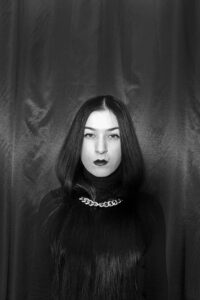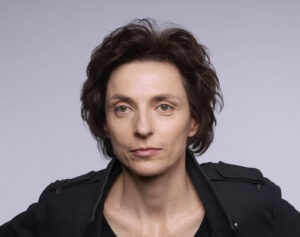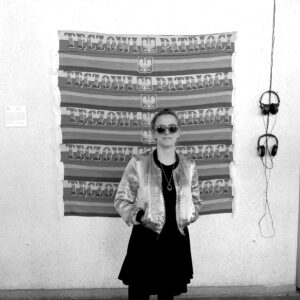Olia Yeriemieieva / Оля Єрємєєва
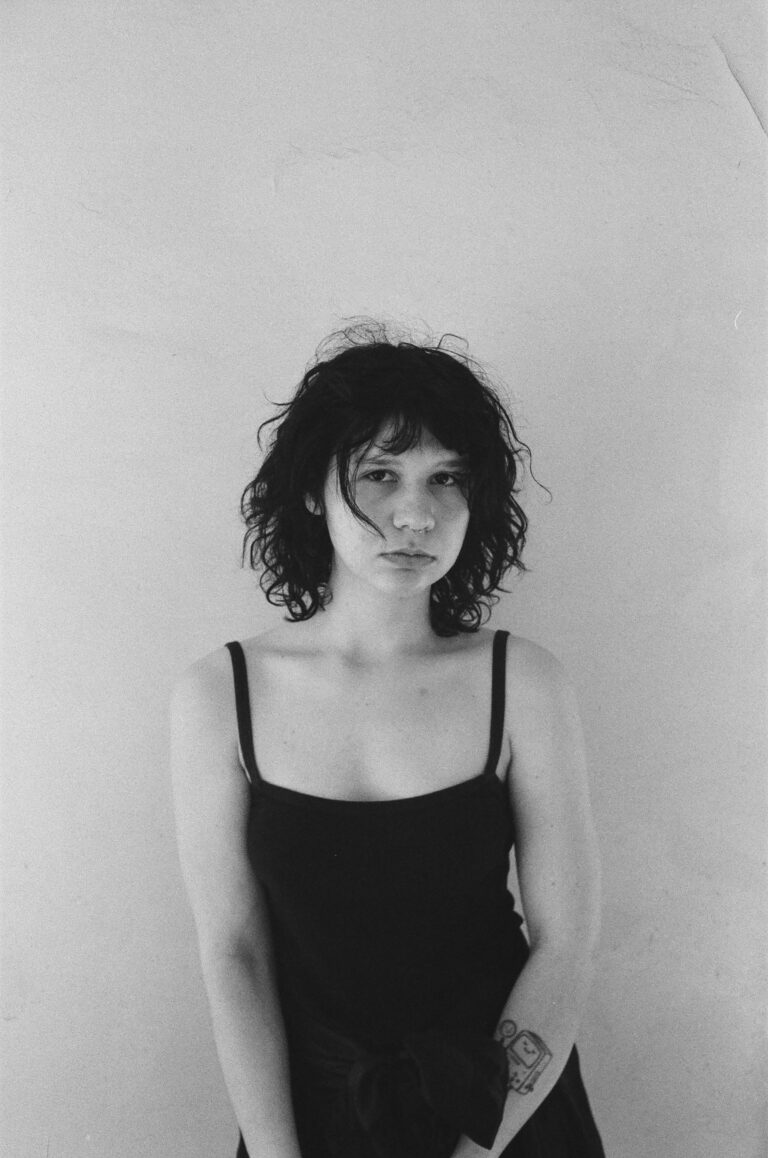
– born in 1997 in Kyiv, Ukraine, where she is based and works. She is a multidisciplinary artist working with themes of corporeality, death, sexuality, memory, and loss. In 2018, she graduated from the Kyiv National University of Technology and Design with a bachelor’s degree in graphic design. Olia also studied Contemporary Art at the Kyiv Academy of Media Arts (KAMA).
My art is mainly about the fear of loss and an attempt to preserve what has not yet been lost. And if it is lost, I aim to rethink and materialize this loss. In my younger years, I experienced the death of my close friends, and in many ways, it shaped me as an artist.
War is synonymous with loss. I have been lucky not to yet lose my home, my city, my memories. But the short-lasting experience of fleeing my hometown and the fear of not returning have only strengthened the need to record what can be so easily erased1. For now, I have this opportunity.
I work a lot with photography. I do not use it as a tool for constructing images but as a means of testimony. Photography can be synonymous with text.
A significant part of my practice is dedicated to the topic of corporeality. I have worked extensively with male eroticism. This practice borders between the manifestation of love and the search for beauty, and it is an attempt at inner emancipation aimed at changing the gender roles of both artist and model2.
I turn to self-portraits3 as evidence of my material presence. I imagine most of my works as a story happening after my death, serving as proof of my existence, my friends, and my surroundings. It is a simultaneous escapism into the past and the future, where grief is still or no longer present.
The album My Family4 is a documentation of the first year of the war. It represents the life of the artistic community and the normalization of life during the war. Evacuation, living in another city, hiding from shelling, parties, and exhibitions. Hervé Guibert wrote that photography has any value only if it captures a certain time and space. This is a statement that accurately describes this work.
After the Russian invasion, I started looking for kinships with other wars5, for points of intersection between past memories and present events, especially in my hometown. I think about a world that has never had peace and tranquility. About endless war and suffering. These thoughts are embodied in the work Sleep Well, It Won’t Happen Again6. The collision of the grief from different wars in one particular place. The hope for a peaceful future that ends a few meters away. Deaths in the name of the Motherland. Deaths that will never end.
I reflect a lot on the human body, which during the war is the main target of destruction, the target of terror. War on many levels is synonymous with the torture of the body. I started working with this topic in a kind of state of affect that emerged when the aftermath of the Russian occupation of Bucha was made public. In the project “Untitled”7, I depicted bodies that were tortured.
Thoughts about loss and life after loss are embodied in the work We Accepted Death8. In it, I express my fear of existence after losing a body part. In the graphic series Sewn People9 I try to reassemble bodies and bring them back to a conventional norm.
In places of mass murder and violent death, will the deceased be able to regain their bodies and personalities in the form of a tree-body? With these thoughts, I created the work People Who Became Trees10.
The full-scale Russian-Ukrainian war has been going on for two years now, and it’s hard to think of it as something separate — as something that never happened and will end someday. In the present and future, I see more responsibilities than opportunities. To continue my work, to document what surrounds me, to create culture in times of its total destruction.
The text is written in cooperation with Alya Segal (2024).
1Image: Olia Yeriemieieva, Photo from the "Exhibition on Biloruska 1" apartment exhibition, 2023. Courtesy of the artist.2Image: Olia Yeriemieieva, Portrait of Vlad, analog photo, 2020. Courtesy of the artist.
3Image: Olia Yeriemieieva, "The Photobooth" project, 2020-2022, Courtesy of the artist.
4Image: Olia Yeriemieieva, My Family album, 2022. Courtesy of the artist.
5Image: Olia Yeriemieieva, Diary, 2022. An installation in Timișoara, Romania, as part of the Movin Fireplaces festival. Courtesy of the artist.
6Image: Olia Yeriemieieva, "Sleep Well, It Will Not Happen Again" series, 2023, paper, watercolor. Courtesy of the artist.
7Image: Olia Yeriemieieva, From the "Untitled" series, 2022, analog photography. The work was created during the "Working Room" residency. Courtesy of the artist.
8Image: Olia Yeriemieieva, Triptych We Accepted Death, 2022, analog photo. Courtesy of the artist.
9Image: Olia Yeriemieieva, Sewn People, 2023, fabric, marker. Courtesy of the artist.
10Image: Olia Yeriemieieva, From "People Who Became Trees" series, 2023, paper, watercolor. Courtesy of the artist.
– Народилася 1997 року в Києві, Україна, де живе і працює. Мультидисциплінарна художниця. Працює з темами тілесності, смерті, сексуальності, пам’яті та втрати. У 2018 році закінчила Київський національний університет технологій та дизайну зі ступенем ступінь бакалавра з графічного дизайну. Навчалася в Київській академії медіа-мистецтв (КАМА) за спеціальністю сучасне мистецтво.
Моє мистецтво переважно – це про страх втрати й спроба зберегти те, що ще не втрачено. А якщо втрачено, то переосмислити і матеріалізувати цю втрату.
В дитинстві і в юності я пережила смерть своїх близьких друзів і це той досвід, що багато в чому сформував мене, як художницю.
Війна – це синонім втрачання. Мені пощастило допоки не втратити свій дім, місто, спогади. Але короткочасний досвід втечі з власного міста і страх неповернення посилив почуття необхідності фіксування того, що може бути так легко стерте1. Поки я маю цю можливість.
Я багато працюю з фотографією. Переважно не як з інструментом створення образу, а як з інструментом запису. Фотографія може бути синонімом тексту.
Велику частину моєї практики займає тема тілесності. Я багато працювала з чоловічою еротикою. Ця практика десь посередині між проявом любові і пошуком краси та спробою внутрішньої емансипації, спроба змінити гендернозумовлену роль митця і моделі2.
Я звертаюся до автопортретів3, як до доказу своєї матеріальності. Більшість того, що я роблю, уявляю як історію після моєї смерті, як докази існування мене, моїх друзів, мого оточення. Це одночасний ескапізм і в минуле, і в майбутнє, де горя ще або вже немає.
Альбом Моя сім’я4 є документацією першого року війни. Він репрезентує життя художньої спільноти і нормалізацію життя в умовах війни. Евакуація, проживання в іншому місті, ховання від обстрілів, вечірки і виставки. Ерве Гібер писав, що фотографія має якусь цінність лише за умови фіксацій певного часу і простору. Це вислів, який точно описує цю роботу.
Після російського вторгнення я почала шукати спорідненість в інших війнах5, точки нашарування спогадів минулого і подій теперішнього, особливо в рідному місті. Думаю про світ, в якому ніколи не було миру і спокою. Про нескінченну війну і страждання. Ці думки уособлює робота Спи спокійно, це не повториться6. Зіткнення горя різних воєн в одному конкретному місці. Надія на мирне майбутнє, яке обривається за декілька метрів. Смерті в ім’я Батьківщини, які ніколи не закінчаться.
Я багато думаю про тіло у війні, яке є основною ціллю знищення, ціллю терору. Війна на багатьох рівнях є синонімом тортури тіла. Я почала працювати з цією темою у своєрідному стані афекту після оприлюднення наслідків окупації Бучі російськими військовими. В проєкті “Без назви”7 я зобразила тіла, які є об’єктами тортур.
Думки про втрату і життя пiсля втрати втілені у роботі Ми прийняли смерть8. В ній я проявляю свій страх існування після втрати частини тіла. У графічній серії Зшиті люди9 я намагаюся зібрати тіла і повернути їх до умовної норми.
Чи в місцях масових вбивств та насильницької смерті померлі люди зможуть повернути собі тіло й особистість у вигляді тіла-дерева? З цими думками я створювала роботу Люди, які стали деревами10.
Повномасштабна російсько-українська війна триває вже два роки і важко думати про неї як про щось окреме – щось, чого колись не було і що колись закінчиться. В теперішньому і майбутньому я бачу не стільки можливості, скільки обов’язки. В продовженні роботи, у фіксації того, що мене оточує, у створенні культури в часи її тотального знищення.
Текст написано у співпраці з Алею Сєгал (2024).
1Зображення: Оля Єрємєєва, Фото з квартирної виставки “Виставка на Білоруській 1” у 2023 році. Надано художницею.2Зображення: Оля Єрємєєва, Портрет Влада, 2020 рік, аналогова фотографія. Надано художницею.
3Зображення: Оля Єрємєєва, Проєкт “Фотобудка” 2020-2022 роки. Надано художницею.
4Зображення: Оля Єрємєєва, Альбом Моя сім’я, 2022 рік. Надано художницею.
5Зображення: Оля Єрємєєва, Щоденник, 2022 рік. Інсталяція в Тімішоарі, Румунія, в межах фестивалю “Movin Fireplaces”. Надано художницею.
6Зображення: Оля Єрємєєва, Серія “Спи спокійно, це не повториться”, 2023 рік, папір, акварель. Надано художницею.
7Зображення: Оля Єрємєєва, З серії “Без назви”, 2022 рік, аналогова фотографія. Створено в рамках резиденції “Робоча кімната”. Надано художницею.
8Зображення: Оля Єрємєєва, Триптих Ми прийняли смерть, 2022 рік, аналогова фотографія. Надано художницею.
9Зображення: Оля Єрємєєва, Зшиті люди, 2023 рік, тканина, маркер. Надано художницею.
10Зображення: Оля Єрємєєва, Серія “Люди, які стали деревами”, 2023 рік, папір, акварель. Надано художницею.
